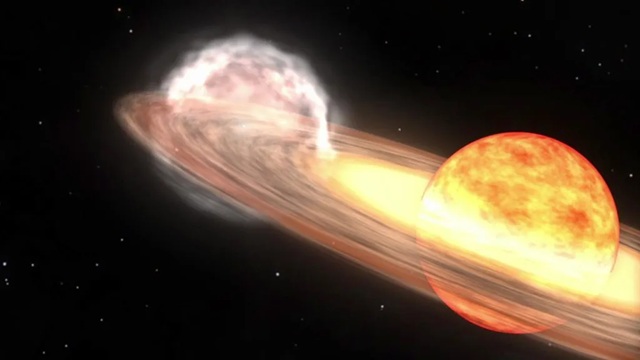A star system located 3,000 light-years from Earth is on the brink of a spectacular nova event — and when it erupts, it will be visible to the naked eye from our planet. Known as T Coronae Borealis, or the Blaze Star, this rare stellar explosion occurs roughly once every 80 years, temporarily creating the appearance of a bright new star in the night sky for about a week.
T Coronae Borealis (T CrB), commonly known as the “Blaze Star,” is a recurrent nova located approximately 3,000 light-years away in the constellation Corona Borealis. This binary star system consists of a white dwarf and a red giant. The white dwarf’s intense gravitational pull siphons hydrogen from its red giant companion, leading to periodic thermonuclear explosions on the white dwarf’s surface. These eruptions dramatically increase the system’s brightness, making it visible to the naked eye from Earth.
Historically, T CrB has erupted roughly every 80 years, with notable outbursts recorded in 1866 and 1946. Astronomers are currently monitoring the system closely, as indicators suggest that another eruption is imminent. When this nova event occurs, T CrB is expected to reach a magnitude similar to that of Polaris (the North Star), making it a prominent feature in the night sky.
The hydrogen from the red giant accretes on the surface of the white dwarf, causing a buildup of pressure and heat. Eventually, it triggers a thermonuclear explosion big enough to blast away that accreted material. For T CrB, that event appears to reoccur, on average, every 80 years.
“It’s a once-in-a-lifetime event that will create a lot of new astronomers out there,” said NASA astronomer Dr. Rebekah Hounsell. “It’s incredibly exciting to have this front-row seat.”
“We expect that [T Coronae Borealis] will erupt any night now, any month now,” Bradley Schaefer, a Louisiana State University astronomer and Blaze Star specialist told Annie Jennemann of Hearst.
To observe the Blaze Star’s anticipated explosion, stargazers should locate the Corona Borealis constellation, which appears as a semicircular arc between the constellations Boötes and Hercules. This constellation is best viewed in the northern hemisphere during the spring and summer months.
It’s important to note that predicting the exact timing of such stellar events is challenging, and while signs point to an impending eruption, the precise date remains uncertain. Nonetheless, the potential nova offers a rare opportunity for both professional and amateur astronomers to witness a remarkable celestial phenomenon.




